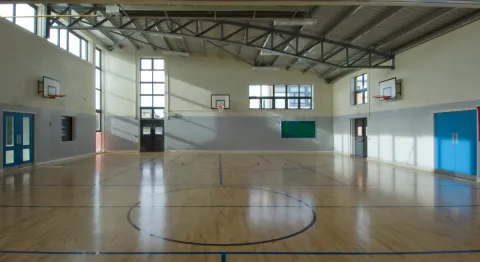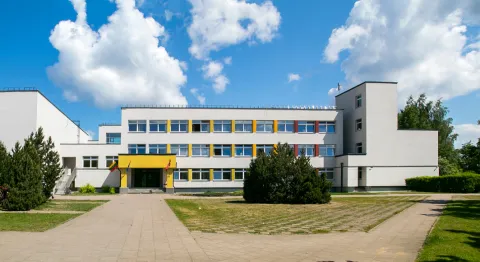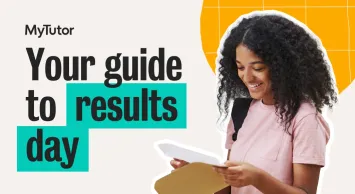5 innovative ways schools and MATs can boost their revenue in 24/25
As budgets tighten and costs continue to rise, schools and Multi-Academy Trusts (MATs) face increasing financial challenges.
The latest government budget provides an increased budget, however this doesn’t represent a real funding increase but is to support the increased deficits that have become more difficult to manage in the last 3 years. The 2024 Academies Benchmark Report shows 47% of MATs now have yearly deficits, up from 19% in 2021.
These challenges increase the financial pressures on schools and MATs and it is up to leaders to generate additional revenue streams to support students with the additional learning interventions they require.
In order to meet these needs in a challenging environment, we’ve put together 5 commercial strategies you can use to improve the diversification of your revenue, along with their potential cost implications.
1. Use your buildings better: Make money from your space
With non-staff costs per student up 16%, it's time to maximise the space in your schools and use your existing facilities to maximise revenue opportunities. This includes:
Rent after hours
Transform gyms, sports fields, and halls into community hubs. Local sports teams, drama groups, and adult education providers often seek affordable, long-term spaces with flexible times and access.
A medium-sized MAT could generate £50,000-£100,000 annually through strategic rentals across multiple spaces during off-peak times.
Cost implication: Initial costs for marketing, facility management, cleaning, and administration will be incurred. However, there’s potential ROI within 6-12 months with longer term revenue guaranteed.
Upgrade facilities
Schools and MATs can invest wisely for year-round returns. For example, converting a traditional tennis court into two padel courts can capitalise on the UK's fastest-growing sport.
The initial investment is around £50k; but the possible yearly return is £100k. This strategic upgrade attracts a wider range of users and generates recurring revenue all year round away from seasonal usage that tennis offers. Additional revenue can be generated through coaching, membership and equipment rental.
Cost implication: There is a significant upfront investment, but potential for significant returns. Schools and MATs can break-even typically within 1-2 years.
Holiday programmes
By running specialised camps or workshops during school breaks, schools and MATs can generate additional revenue while school is closed. By offering diverse options from coding boot camps to sports academies, schools can attract both local and prospective students. A well-executed holiday programme could bring in £5,000-£10,000 per holiday when all facilities are utilised.
Cost implication: Staffing and material costs need to be factored in but holiday programmes are typically profitable within the first holiday season if well marketed.

2. Sell your expertise: Monetise your experience
Established schools and MATs have the most experienced educators in the sector. It’s time to leverage their expertise to generate additional revenue.
Consultancy services
Schools and MATs possess high-quality educational expertise and best-in-class support functions. Many EdTech firms offer school support in these areas, so why can't you?
By providing expert advice to other schools or trusts on a retainer basis in areas like curriculum development, leadership training, safeguarding or financial management with clear service level agreements, you can start to develop a sustainable, long term revenue business. The potential annual revenue could be £20k-30k per specialist area.
Cost implication: There are minimal upfront costs, mainly time investment from existing staff with high profit potential depending on your areas of expertise.
3. Cut costs strategically: How can you save money?
With energy costs per student rising at least 49% from last year, schools and MATs need to implement smart cost-cutting strategies.
Subscription audit
By thoroughly reviewing all subscriptions and contracts you can make potential savings of 10-15%. We recommend evaluating the utilisation of expensive platforms, exploring different contract types, and negotiating better rates with suppliers.
Cost implication: Costs are minimal as this requires only staff time for review and negotiation and will make lasting savings.
Bulk purchasing
You can leverage the competitive EdTech market and your school or MAT's size to secure better deals on everything from stationery to software licences. This offers potential savings of 20-30% through bulk buying.
Cost implication: Initial higher outlay but significant medium-term savings.
Use frameworks
There are a number of existing frameworks that can be used by schools and MATs to get best value deals on new services and supplies. Using frameworks ensures that due diligence has already been completed on providers and ensures the best value for money.
Cost implication: There is no additional cost for a school or MAT to procure goods or services from a framework.

4. Grant bids: Transfer knowledge into funding
With only 11% of academies receiving grant funding for transfers in 2023-24, there's room for improvement.
Start a dedicated grant team
Establish a small team focused on identifying and applying for grants. Their salaries can be offset by the funding they secure. A great starting place is MyTutor’s ultimate funding guide for schools, which contains 100+ grant-makers.
Cost implication: Salaries for the grant team will need to be covered by the revenue generated but there is potential for high ROI if successful.
Partnership grants
Schools and MATs can collaborate with local businesses or universities to apply for joint funding benefiting both parties. Cost implication: There is a time investment in building relationships but potential for shared costs and resources.
5. Corporate partnerships: Beyond work experience
Cultivate relationships with the corporate world to unlock financial opportunities through Corporate Social Responsibility (CSR) strategies and beyond.
Sponsored facilities
Schools and MATs can offer naming rights for new buildings, awards, or extra-curricular programmes in exchange for significant financial contributions. The potential sponsorship value could be £50,000-£250,000 per facility.
Cost implication: There are minimal direct costs and you need to consider the potential impact on school culture and community perception.
Apprenticeship schemes
You can develop robust apprenticeship programmes with corporate partners. They can contribute financially to training while your school or MAT provides the educational framework. Potential annual revenue could be £5,000-£20,000 per major corporate partner.
Cost implication: There are initial setup costs and ongoing administration but potential for government funding to offset costs.
Schools and MATs alike have significant potential to raise additional revenue through diversified funding streams. By creatively leveraging your unique assets—from physical space to intellectual capital—you can build a more robust and diverse financial foundation.
This approach not only provides stability but also allows for reinvestment in what matters most: the quality of education you provide. With these strategies, you can lead the way in demonstrating how educational excellence and financial acumen can go hand in hand.
If you need any further support or advice on the above, please feel free to contact us at MyTutor. We'll be happy to help.
This post was written by Brett Roberts, MyTutor's Head of Commercial.


